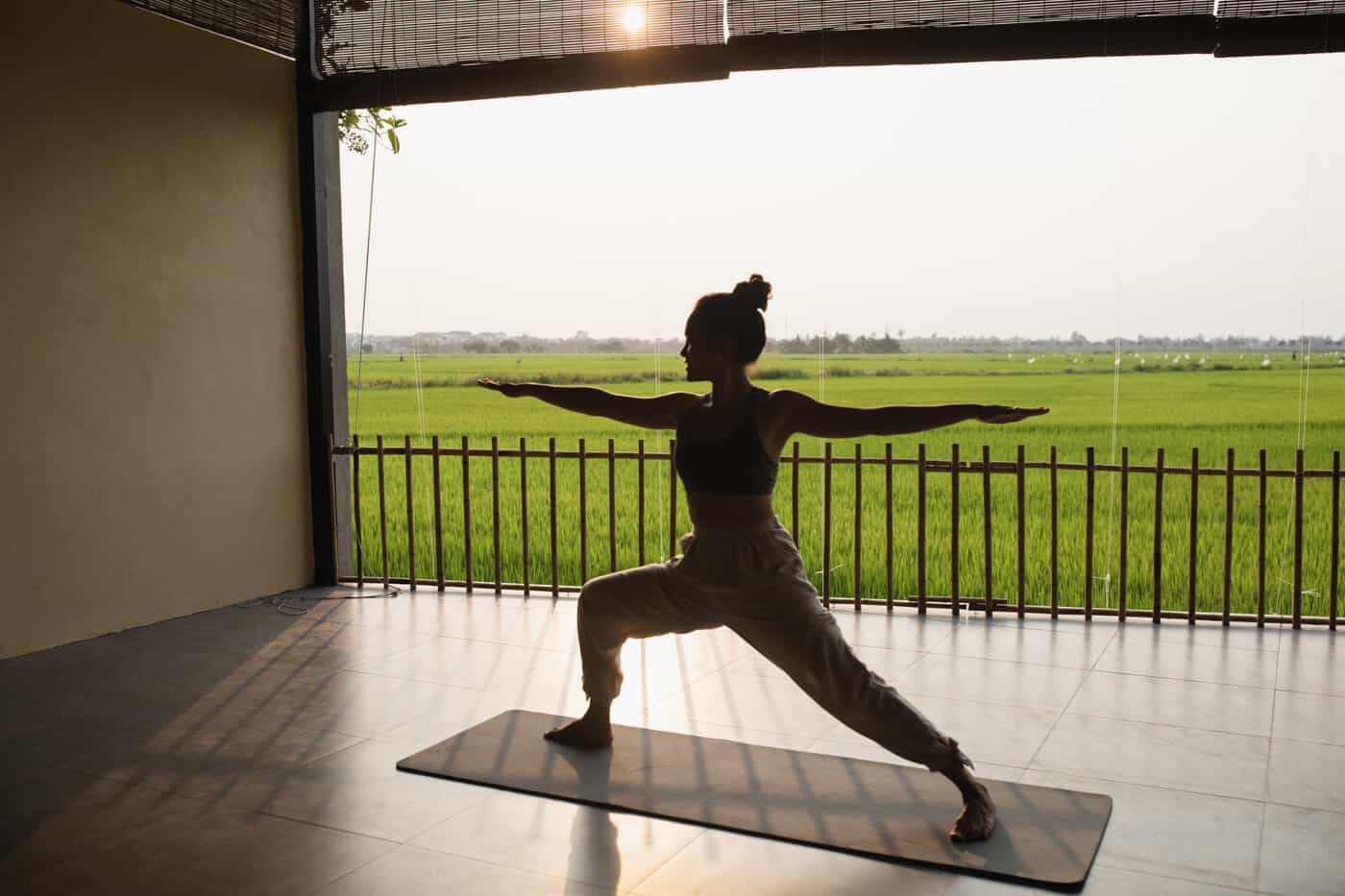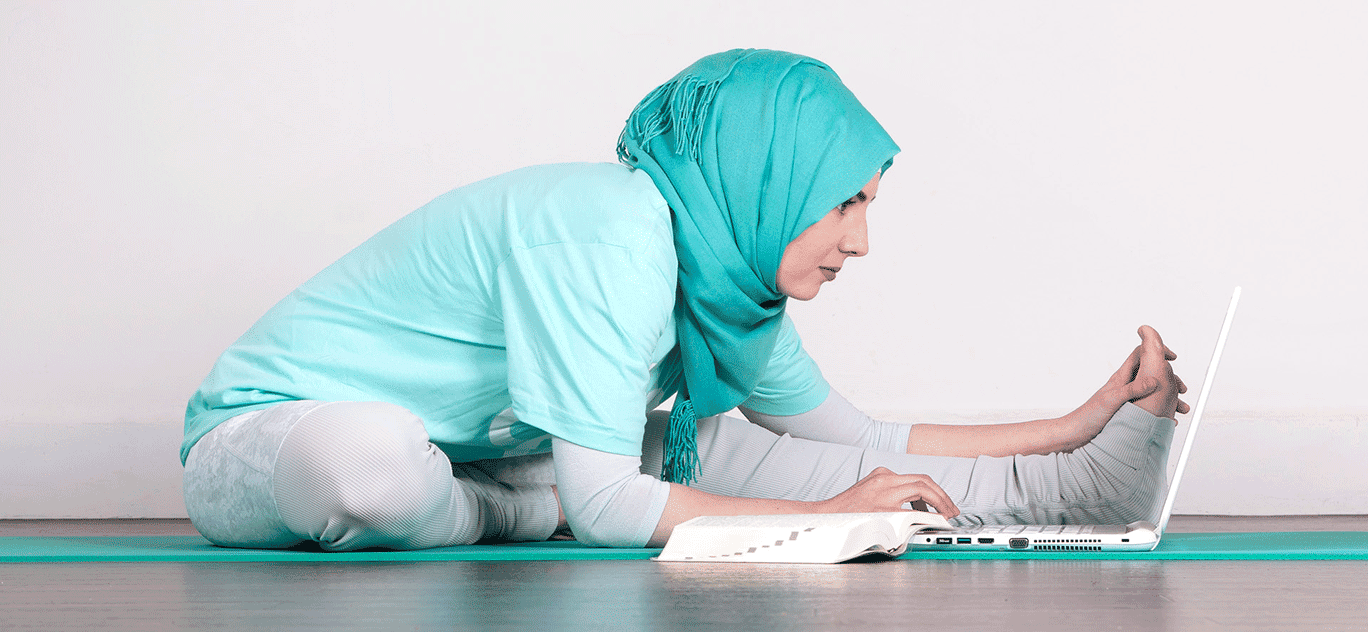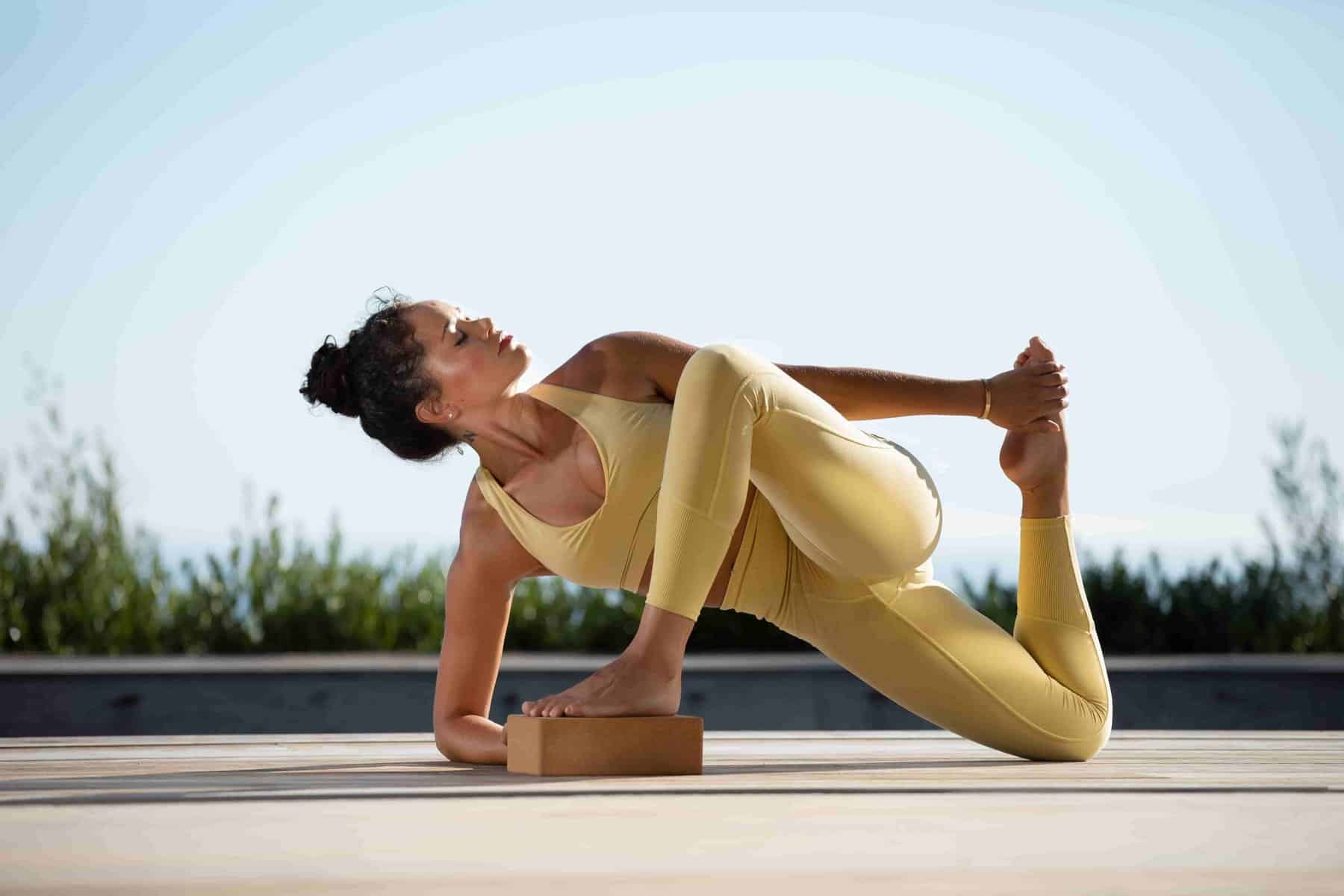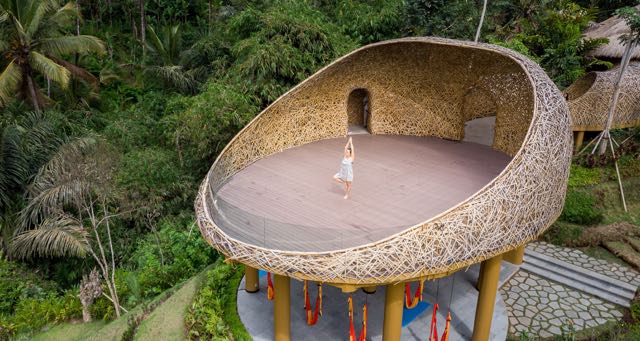In today’s fast-paced world, more and more people are embracing the digital nomad lifestyle. Digital nomads are individuals who have the freedom to work remotely and travel while doing so. They often find themselves constantly on the move, exploring new cities and experiencing different cultures. While this lifestyle can be exciting and fulfilling, it can also be physically and mentally demanding. That’s where yoga comes in.
Yoga offers a multitude of benefits for digital nomads. First and foremost, it provides stress relief. The constant movement and uncertainty that comes with being a digital nomad can be overwhelming at times, and yoga offers a much-needed escape from the chaos. Through deep breathing and mindful movement, yoga helps to calm the mind and reduce stress levels.
Additionally, yoga helps to improve posture, which is crucial for digital nomads who spend long hours hunched over laptops or sitting in uncomfortable positions while traveling. Poor posture can lead to back pain, neck tension, and other musculoskeletal issues. By practicing yoga regularly, digital nomads can strengthen their core muscles and improve their posture, reducing the risk of pain and discomfort.
Furthermore, yoga increases energy levels. Traveling can be exhausting, with long flights, jet lag, and irregular sleep patterns. Yoga poses that focus on stretching and opening the body help to increase blood flow and oxygenation, providing a natural energy boost. By incorporating yoga into their daily routine, digital nomads can combat fatigue and stay energized throughout their travels.
The Importance of Maintaining a Yoga Practice While Traveling
While traveling can be exciting and invigorating, it can also disrupt a regular yoga practice. Digital nomads often find themselves in unfamiliar environments with limited access to yoga studios or classes. However, it is important for digital nomads to make an effort to maintain a consistent yoga practice while on the road.
Maintaining a yoga practice while traveling helps to create a sense of routine and stability. It provides a grounding anchor amidst the constant change and unpredictability of the digital nomad lifestyle. By setting aside time each day for yoga, digital nomads can establish a sense of normalcy and maintain their physical and mental well-being.
Consistency is key when it comes to yoga. Regular practice allows the body to adapt and progress, building strength, flexibility, and balance over time. By practicing yoga consistently, digital nomads can reap the full benefits of the practice and continue to improve their physical and mental health.
Yoga Poses to Relieve Neck and Shoulder Tension
Digital nomads often experience neck and shoulder tension due to long hours spent working on laptops or carrying heavy backpacks while traveling. This tension can lead to headaches, stiffness, and discomfort. Fortunately, there are several yoga poses that can help relieve neck and shoulder tension.
One effective pose is shoulder rolls. To perform this pose, sit or stand with your feet hip-width apart. Inhale as you lift your shoulders up towards your ears, then exhale as you roll them back and down. Repeat this movement several times, allowing your breath to guide the movement. This simple exercise helps to release tension in the shoulders and promote relaxation.
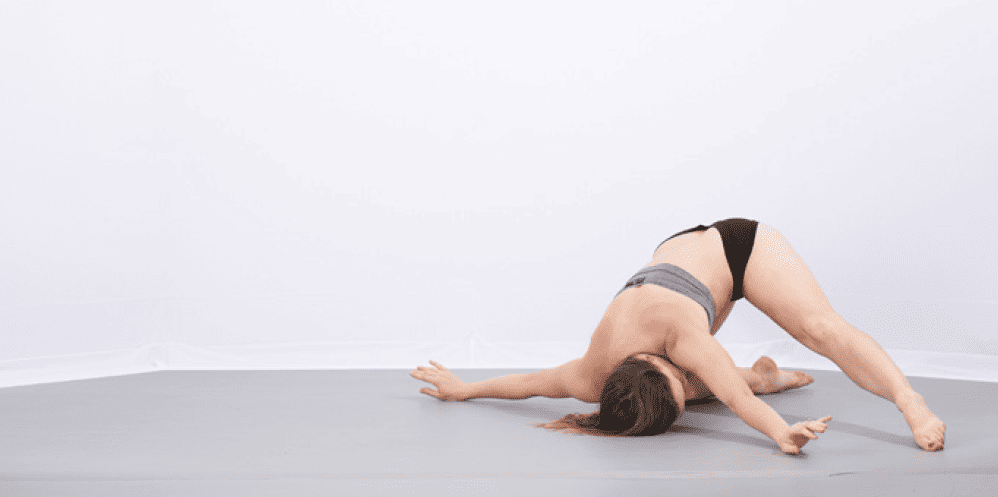
Another pose that targets neck tension is neck stretches. Begin by sitting or standing with your spine tall. Slowly tilt your head to one side, bringing your ear towards your shoulder. Hold this stretch for a few breaths, then repeat on the other side. You can also gently rotate your head in circles, moving in one direction and then reversing the movement. These stretches help to release tension in the neck muscles and improve flexibility.
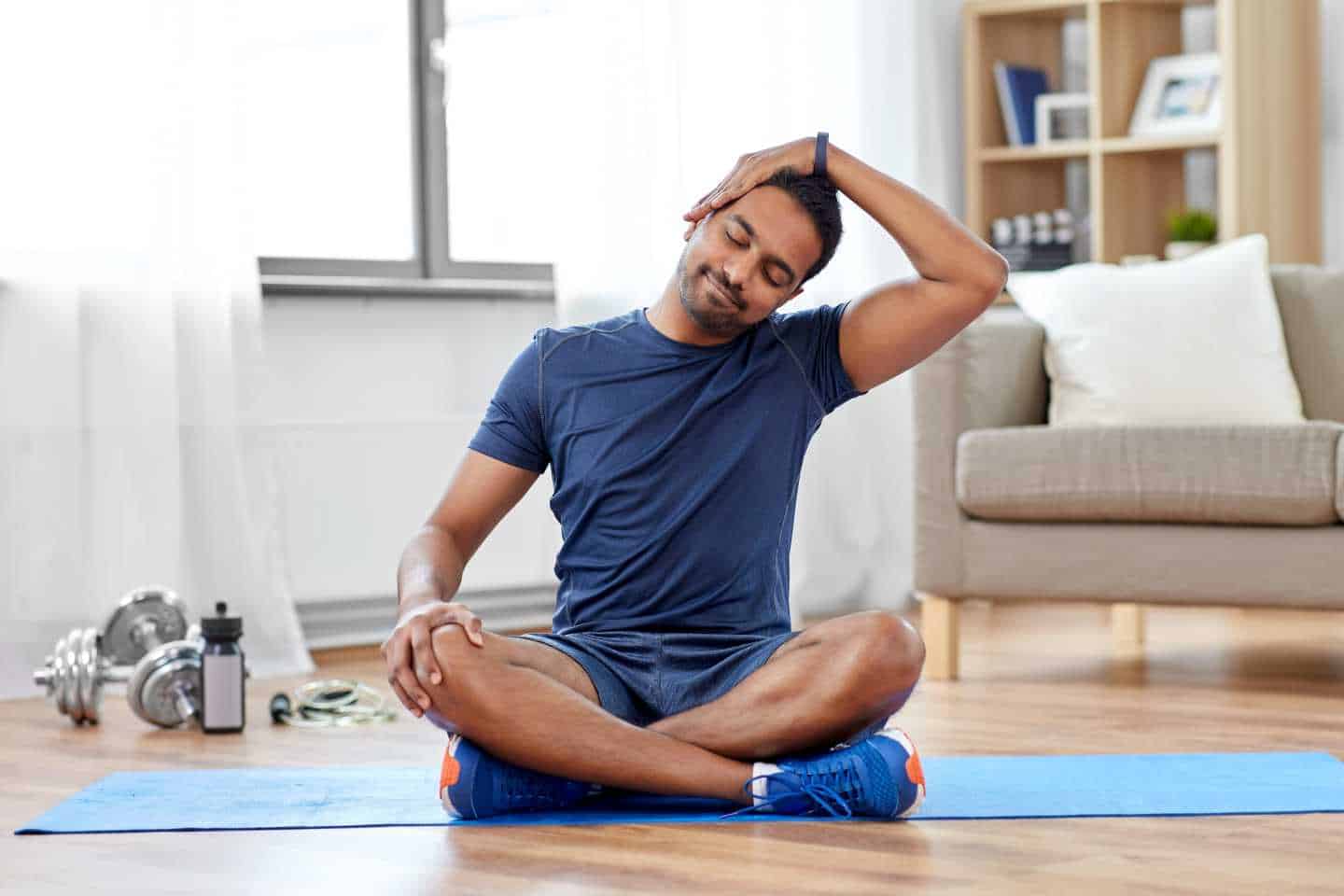
Yoga Poses to Improve Posture and Prevent Back Pain
Sitting for long periods of time can lead to poor posture and back pain, which is a common issue for digital nomads. Fortunately, yoga offers a variety of poses that can help improve posture and prevent pain.
One pose that is particularly beneficial for posture is cat-cow. Start on your hands and knees, with your wrists directly under your shoulders and your knees under your hips. Inhale as you arch your back, lifting your chest and tailbone towards the ceiling (cow pose). Exhale as you round your spine, tucking your chin towards your chest and drawing your belly button towards your spine (cat pose). Repeat this movement several times, synchronizing it with your breath. Cat-cow helps to strengthen the muscles that support good posture and increase spinal flexibility.
Another pose that targets posture is downward dog. Begin on your hands and knees, then lift your hips up towards the ceiling, straightening your legs and pressing your heels towards the ground. Your body should resemble an inverted V shape. Press your hands firmly into the ground and engage your core muscles to support the pose. Downward dog helps to lengthen the spine, stretch the hamstrings, and strengthen the upper body, all of which contribute to improved posture.
Yoga Poses to Increase Energy and Combat Fatigue
Traveling can be physically and mentally exhausting, especially for digital nomads who are constantly on the move. Yoga poses that focus on increasing energy can be a game-changer for combating fatigue and staying energized throughout the day.
One such pose is sun salutations. Sun salutations are a series of flowing movements that warm up the body and energize the mind. They involve a combination of forward folds, lunges, and upward-facing dog poses. Sun salutations help to increase blood flow, stretch the muscles, and awaken the body. By incorporating sun salutations into their morning routine, digital nomads can start their day with a burst of energy.
Warrior poses are also great for increasing energy levels. These poses involve standing with one leg forward and the other leg extended behind, with the arms reaching out to the sides. Warrior poses build strength, stability, and focus, while also stretching the legs and opening the chest. By practicing warrior poses, digital nomads can tap into their inner strength and boost their energy levels.
Yoga Poses to Calm the Mind and Reduce Stress
Traveling can be stressful, with constant change, unfamiliar environments, and a lack of routine. Yoga poses that focus on calming the mind and reducing stress are essential for digital nomads who want to maintain their mental well-being.
One pose that is particularly effective for relaxation is child’s pose. Start by kneeling on the floor, then sit back on your heels and fold your torso forward, resting your forehead on the ground. Extend your arms out in front of you or place them alongside your body. Breathe deeply and allow your body to relax into the pose. Child’s pose helps to release tension in the back, shoulders, and neck, while also promoting a sense of calm and tranquility.
Corpse pose is another pose that is perfect for reducing stress. Lie flat on your back with your legs extended and your arms resting alongside your body. Close your eyes and focus on your breath, allowing your body to completely relax. Corpse pose helps to calm the nervous system, reduce anxiety, and promote deep relaxation. By practicing this pose at the end of a yoga session or before bed, digital nomads can unwind and let go of any stress or tension they may be carrying.
Yoga Poses to Improve Digestion and Relieve Bloating
Traveling can disrupt digestion, leading to bloating, constipation, or other digestive issues. Yoga poses that focus on improving digestion are essential for digital nomads who want to maintain a healthy gut while on the road.
Twists are particularly beneficial for digestion. One simple twist is seated spinal twist. Start by sitting on the floor with your legs extended in front of you. Bend your right knee and place your right foot on the outside of your left knee. Inhale as you lengthen your spine, then exhale as you twist to the right, placing your left hand on your right knee and your right hand behind you for support. Hold the twist for a few breaths, then repeat on the other side. Twists help to stimulate digestion, massage the internal organs, and relieve bloating.
Seated forward folds are also great for improving digestion. One pose to try is seated forward fold with a twist. Start by sitting on the floor with your legs extended in front of you. Inhale as you lengthen your spine, then exhale as you fold forward, reaching towards your feet. Once you are in the forward fold, twist to one side, placing one hand on the outside of the opposite foot and the other hand behind you for support. Hold the twist for a few breaths, then repeat on the other side. Seated forward folds help to stimulate digestion, relieve constipation, and promote a healthy gut.
Yoga Poses to Stretch Tight Hips and Hamstrings
Sitting for long periods of time can lead to tight hips and hamstrings, which can cause discomfort and limit mobility. Yoga poses that focus on stretching these areas are essential for digital nomads who want to maintain flexibility and prevent pain.

One pose that targets tight hips is pigeon pose. Start in a high plank position, then bring your right knee towards your right wrist and place your right foot towards your left hip. Extend your left leg behind you, keeping it straight and active. Square your hips towards the front of the mat and fold forward over your right leg. You can use props such as blocks or blankets to support yourself if needed. Hold the pose for a few breaths, then repeat on the other side. Pigeon pose helps to open the hips, release tension, and increase flexibility.
Lizard pose is another pose that stretches the hips and hamstrings. Start in a high plank position, then step your right foot to the outside of your right hand. Lower your left knee to the ground and slide your left leg back, keeping it straight and active. You can stay on your hands or lower down onto your forearms for a deeper stretch. Hold the pose for a few breaths, then repeat on the other side. Lizard pose helps to stretch the hip flexors, hamstrings, and groin muscles, improving flexibility and relieving tightness.
Yoga Poses to Strengthen Core Muscles and Improve Balance
Sitting for long periods of time can weaken core muscles and impair balance, which can lead to poor posture and an increased risk of falls. Yoga poses that focus on strengthening the core and improving balance are essential for digital nomads who want to maintain stability and prevent injuries.
One pose that targets core muscles is boat pose. Start by sitting on the floor with your legs extended in front of you. Bend your knees and lift your feet off the ground, balancing on your sit bones. Extend your arms forward, parallel to the ground. Engage your core muscles and lengthen through your spine. Hold the pose for a few breaths, then release back down to the ground. Boat pose helps to strengthen the abdominal muscles, improve balance, and increase core stability.
Tree pose is another pose that improves balance. Start by standing tall with your feet hip-width apart. Shift your weight onto one foot and lift the opposite foot off the ground, placing it on the inner calf or thigh of the standing leg. Bring your hands together at your heart center or extend them overhead. Find a focal point to gaze at for balance. Hold the pose for a few breaths, then repeat on the other side. Tree pose helps to strengthen the muscles of the standing leg, improve balance, and cultivate focus and concentration.
Tips for Finding Yoga Classes and Studios While Traveling
Finding yoga classes and studios while traveling can be a challenge, especially in unfamiliar cities or countries. However, with a little research and planning, digital nomads can easily find yoga classes to attend during their travels.
One of the best resources for finding yoga classes is the internet. Websites such as YogaFinder, YogaTrail, and MindBody allow users to search for yoga classes by location, style, and level. These websites provide detailed information about each studio, including class schedules, teacher bios, and student reviews. Digital nomads can use these online resources to find yoga classes that suit their preferences and fit into their travel itinerary.
Another way to find yoga classes while traveling is to ask locals for recommendations. Locals are often familiar with the best yoga studios in their area and can provide valuable insights and suggestions. Digital nomads can ask hotel staff, fellow travelers, or even locals they meet in cafes or shops for recommendations. This not only helps to find yoga classes but also provides an opportunity to connect with the local community and learn more about the culture of the place they are visiting.
Lastly, many popular tourist destinations offer outdoor or beach yoga classes. These classes are often advertised on flyers or posters in cafes, hostels, or community bulletin boards. Digital nomads can keep an eye out for these advertisements and take advantage of the opportunity to practice yoga in a beautiful natural setting.
Incorporating Yoga into Your Digital Nomad Lifestyle
Incorporating yoga into a digital nomad lifestyle offers numerous benefits for physical and mental well-being. From stress relief to improved posture, increased energy to reduced bloating, yoga provides a holistic approach to maintaining health while on the road.
By making a conscious effort to maintain a consistent yoga practice, digital nomads can reap the full benefits of the practice and enhance their overall quality of life. Whether it’s finding yoga classes and studios while traveling or practicing yoga in the comfort of their own accommodation, digital nomads have the power to incorporate yoga into their daily routine and make it an integral part of their digital nomad lifestyle. So roll out your mat, take a deep breath, and embrace the transformative power of yoga on your journey as a digital nomad.
Originally posted 2024-01-09 16:43:53.

